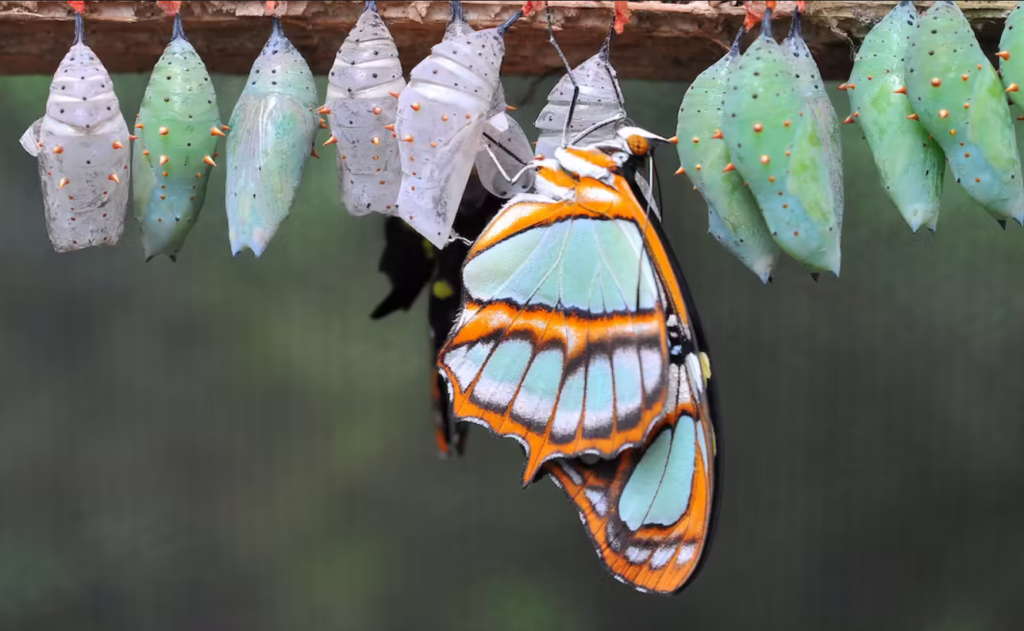Mature paper wasps exhibit impressive craftsmanship, meticulously constructing nests from plant materials and saliva. However, their journey begins as larvae engaged in their own construction projects. Prior to undergoing metamorphosis into adulthood, most paper wasp larvae retreat into specialized nest compartments, sealing them with cocoon caps woven from silk threads.
As these larvae teeter on the brink of maturity, they may add a touch of personal flair to their living quarters. In the case of several paper wasp species, including those found in typical yards, their cocoon caps emit a yellow-green fluorescence under ultraviolet light, creating a captivating glow throughout the nest. This newfound phenomenon, documented recently in the Journal of the Royal Society Interface, revealed that the silk of Polistes brunetus, a species inhabiting Vietnam’s forests, emits light three times brighter than any previously known fluorescent terrestrial animal.

This discovery contributes to the growing array of surprising instances of natural fluorescence, further deepening the mystery surrounding the purposes, if any, behind these dazzling displays. While ultraviolet (UV) light is imperceptible to humans due to its high frequency, fluorescent pigments and molecules absorb and re-emit it as visible wavelengths. This phenomenon, widely used in human applications like blacklight parties, also plays a role in the ocean, where animals leverage it to attract prey.
The fluorescence observed in terrestrial animals remains perplexing and relatively rare. Recent years, however, have unveiled previously unknown instances, such as glowing platypuses and flying squirrels, by simply illuminating environments with UV light. In the Cuc Phuong rainforest south of Hanoi, Bernd Schöllhorn, a chemistry professor at the University of Paris, stumbled upon the fluorescent display of a paper wasp nest when shining his UV flashlight. The brightness was so intense that he initially thought another person had directed a flashlight beam at him.

Working alongside wasp expert Lien Thi Phuong Nguyen from the Vietnam Academy of Science and Technology, Schöllhorn collected nests from various paper wasp species across Vietnam. Analyzing them with colleagues at the Paris Institute of Nanosciences, they discovered that P. brunetus nests returned an astonishing 35% of absorbed UV light—three times more than the most fluorescent land animals known previously.
The question remains whether this flamboyant display serves a purpose. The team suggested several possibilities, including improved camouflage, acting as a homing beacon, or signaling larger predatory wasps to keep their distance. Fluorescent compounds might also protect against harmful UV rays, potentially shielding the larvae during their crucial metamorphosis.

Despite the excitement surrounding this discovery, its functional significance remains inconclusive, according to Tim Caro, a professor of evolutionary ecology at the University of Bristol. Investigating the costs of producing fluorescence could offer insights into whether it serves a specific purpose for a given species. As the team pursues further research, they acknowledge the inherent challenge, considering that these remarkable insects possess another, less enigmatic skill: the ability to sting.



